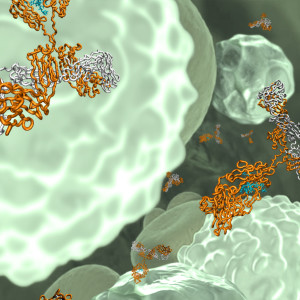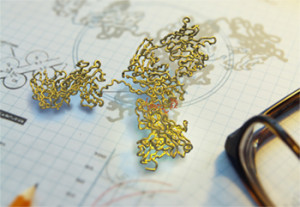 One important characteristic of monoclonal antibodies (mAbs) is their isoelectric point (pI), which essentially is the pH at which the antibody has no net electrical charge, and its value depends on the charged amino acids the antibody contains. If the pH of the surrounding environment is below the antibody’s pI, then the molecule carries a net positive charge, whereas the antibody will carry a net negative charge when the pH is above the pI.
One important characteristic of monoclonal antibodies (mAbs) is their isoelectric point (pI), which essentially is the pH at which the antibody has no net electrical charge, and its value depends on the charged amino acids the antibody contains. If the pH of the surrounding environment is below the antibody’s pI, then the molecule carries a net positive charge, whereas the antibody will carry a net negative charge when the pH is above the pI.
When assessing pharmacokinetic (PK) properties of therapeutic antibodies not only the target-mediated drug disposition (TMDD) but also non-target-related mechanisms influence overall PK behavior and pI can be an important factor of the latter. Since the surface of most cells is negatively charged, antibodies need to be positively charged for efficient fluid-phase endocytosis (pinocytosis), therefore the environmental pH needs to be below the pI of the antibody. Therapeutic antibodies with pI values in the range of 8-9 are taken up adequately after administration since the physiological pH is 7.4, however, in some cases antibodies have a pI outside of this range or have been manipulated to achieve increased or decreased pI values (cationization or anionization, respectively). It is generally observed that increases in net positive charge of antibodies result in increased blood clearance and increased tissue retention with shorter half-life, whereas antibodies with lower pI generally have decreased tissue uptake and longer half-life (1-3), although observations can be conflicting regarding correlation between mAb clearance and pI (4). Even subtle manipulation such as molecular surface remodeling to disrupt positive patch regions can influence PK properties (5). In summary, pI of mAbs is known to have a substantial effect on PK behavior independent of recycling mediated by the neonatal Fc receptor, FcRn. Small changes of pI during the routine manufacturing of mAb charge variants, however, are not expected to result in dramatic changes and may not require extensive analyses (6). In any case, it is encouraged that pI values are reported in studies as an important factor influencing antibody behavior. Furthermore, since selecting the best candidates during early preclinical phases of product development can substantially decrease time and cost of development, it is of great importance to consider de-risk strategies and tools during drug discovery and development, including antibody variable region charge and antibody pI analyses (7-9). A new analytical platform has been recently described and validated on seven mAbs to rapidly assess and rank mAb charge variants during early stage development, which can be a useful screening technique during early stage development (10).
References:
1 Boswell et al, Bioconjug Chem. 2010 Dec 15;21(12):2153-63.
2 Igawa et al, Protein Eng Des Sel. 2010 May;23(5):385-92.
3, Li et al, MAbs. 2014;6(5):1255-64.
4, Hötzel et al, MAbs. 2012 Nov-Dec;4(6):753-60.
5, Datta-Mannan et al, MAbs. 2015;7(3):483-93.
6, Khawli et al, mAbs, 2010;(2)6:613-624.
7, Bumbaca Yadav et al, J Biol Chem. 2015 Dec 11;290(50):29732-41.
8, Dostalek et al, MAbs. 2017 May 2:1-11.
9, Jarasch et al, J Pharm Sci. 2015 Jun;104(6):1885-98.
10, Wagner-Rousset, J Chromatogr A. 2017 May 19;1498:147-154.


